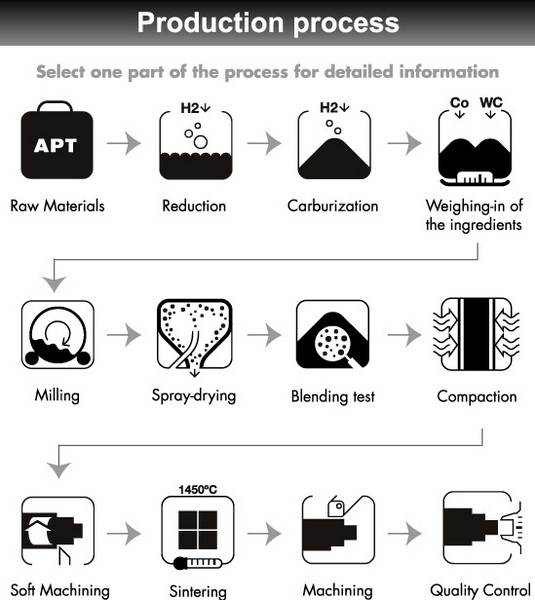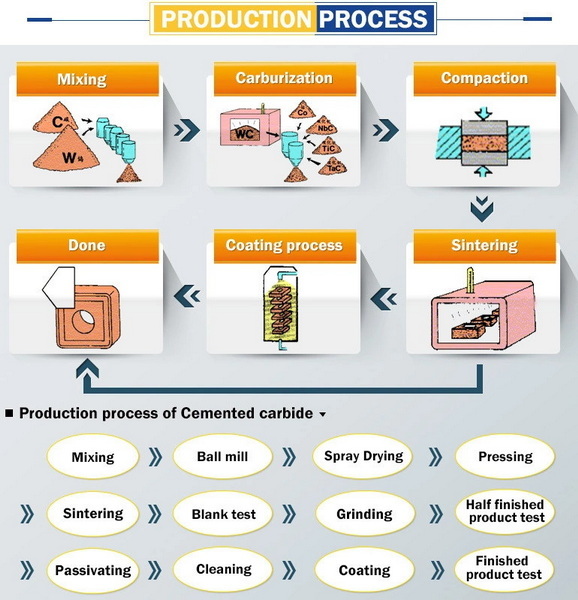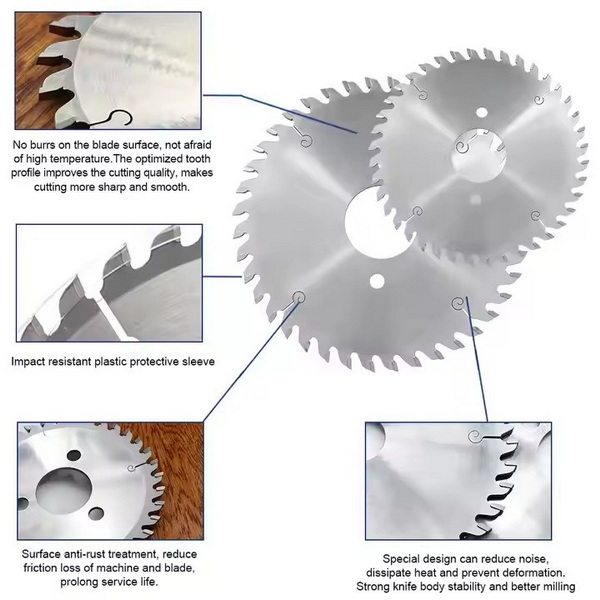Content Menu
● Introduction to Tungsten Carbide
>> Chemical Composition
● Production Process of Tungsten Carbide
>> Material Mixing
>> Carburization
>> Ball Milling
>> Sintering
● Applications of Tungsten Carbide
>> Aerospace and Aviation
>> Oil and Gas Production
>> Manufacturing and Industrial Processing
>> Power Generation
>> Surgical Instruments
● Challenges and Future Developments
>> Environmental Impact
>> Technological Advancements
● Conclusion
● Frequently Asked Questions
>> 1. What is Tungsten Carbide?
>> 2. How is Tungsten Carbide Produced?
>> 3. What are the Key Applications of Tungsten Carbide?
>> 4. What Makes Tungsten Carbide So Hard?
>> 5. Can Tungsten Carbide be Used in Surgical Instruments?
● Citations:
Tungsten carbide is a highly versatile and durable material used in various industrial applications, including cutting tools, wear parts, and coatings. Its exceptional hardness, wear resistance, and thermal properties make it an indispensable component in modern manufacturing. This article will delve into the production process of tungsten carbide, exploring the key steps involved and the importance of this material in different sectors.

Introduction to Tungsten Carbide
Tungsten carbide is a chemical compound composed primarily of tungsten and carbon atoms. The most common form used in industrial applications contains approximately 94% tungsten and 6% carbon by weight. This composition can be modified by adding binding materials, typically cobalt or nickel, to enhance certain properties. The resulting cermet (ceramic-metallic composite) combines the high hardness of ceramic tungsten carbide with the toughness of metallic binders.
Chemical Composition
The chemical composition of tungsten carbide is crucial for its performance. The material's hexagonal crystal structure contributes to its exceptional hardness and stability. The addition of metallic binders like cobalt or nickel improves its ductility and resilience, making it suitable for a wide range of applications.
Production Process of Tungsten Carbide
The production of tungsten carbide involves several key steps: material mixing, carburization, ball milling, and sintering.
Material Mixing
1. Tungsten Powder and Carbon Black Mixing: Tungsten powder is mixed with carbon black in a ball mill for 2-4 hours to ensure uniformity. The quality of the tungsten carbide powder depends on the uniformity of this mixture. If the mixture is uneven, the tungsten carbide powder may develop a core of unreacted material and stratification.
2. Batch Calculation: The calculation must consider not only the carbon needed for the carburization of tungsten but also the carbon required for the reaction between carbon and oxygen in the powder.
Carburization
The carburization of tungsten powder typically takes place in a graphite carbon tube furnace. The carburization process is selected based on the particle size of the tungsten powder and the desired particle size of the tungsten carbide. Generally, the carburization temperature for fine tungsten powder is 1300-1350°C, while for coarse tungsten powder, it is 1600°C. The carburization time ranges from 1-2 hours.
Ball Milling
After carburization, the material undergoes ball milling to achieve a uniform particle size. The duration of ball milling is determined by the specific process, usually around 2 hours. The material is then sieved under closed conditions to separate fine, medium, and coarse particles.
Sintering
The blended powder is compacted into a desired shape and then heated around 1500°C, causing the particles to fuse and form a homogeneous and dense cemented carbide body.

Applications of Tungsten Carbide
Tungsten carbide is used in various industries due to its exceptional properties:
Aerospace and Aviation
Tungsten carbide coatings are applied to turbine blades, compressor seals, and landing gear components to protect against wear and erosion. Its high melting point and resistance to thermal shock make it ideal for these applications.
Oil and Gas Production
The material is used to protect drilling equipment and production components, extending the life of drill bits and valve stems in high-pressure environments. Tungsten carbide's wear resistance helps maintain drilling efficiency and reduces downtime.
Manufacturing and Industrial Processing
Tungsten carbide-coated tools and wear components are used in metal forming and processing applications, significantly extending service life in high-speed machining operations. This reduces tool replacement costs and enhances productivity.
Power Generation
Tungsten carbide coatings shield turbine components from erosion caused by steam, particulates, and high-temperature gases. This improves the efficiency and longevity of power generation equipment.
Surgical Instruments
Tungsten carbide is also used in surgical instruments due to its corrosion resistance and ability to enhance instrument performance. Its hardness ensures precise cuts and minimizes wear, which is crucial in medical procedures.
Challenges and Future Developments
Despite its many advantages, tungsten carbide production faces challenges such as environmental concerns related to tungsten mining and the need for more efficient manufacturing processes. Research into alternative binders and more sustainable production methods is ongoing.
Environmental Impact
The extraction of tungsten can have significant environmental impacts, including pollution and habitat destruction. Efforts to improve mining practices and develop recycling technologies are essential for reducing the environmental footprint of tungsten carbide production.
Technological Advancements
Advancements in sintering technologies, such as the use of microwave sintering, offer potential improvements in efficiency and product quality. Additionally, the development of new composite materials that combine tungsten carbide with other ceramics or metals could expand its range of applications.
Conclusion
Tungsten carbide is a critical material in modern industry due to its hardness, wear resistance, and thermal properties. The production process involves precise steps to ensure uniformity and quality. Its applications span across aerospace, oil and gas, manufacturing, and power generation, highlighting its versatility and importance. As technology continues to evolve, we can expect even more innovative uses for this remarkable material.

Frequently Asked Questions
1. What is Tungsten Carbide?
Tungsten carbide is a chemical compound composed primarily of tungsten and carbon, known for its exceptional hardness and wear resistance. It is often used in industrial applications where durability is crucial.
2. How is Tungsten Carbide Produced?
Tungsten carbide is produced through a process involving material mixing, carburization, ball milling, and sintering. The quality of the final product depends on the uniformity of the tungsten and carbon mixture.
3. What are the Key Applications of Tungsten Carbide?
Tungsten carbide is used in aerospace, oil and gas production, manufacturing, and power generation due to its ability to protect components from wear and erosion.
4. What Makes Tungsten Carbide So Hard?
The hardness of tungsten carbide is attributed to its hexagonal crystal structure and the strong bond between tungsten and carbon atoms. This structure provides exceptional stability and resistance to deformation.
5. Can Tungsten Carbide be Used in Surgical Instruments?
Yes, tungsten carbide is used in surgical instruments due to its corrosion resistance and ability to enhance instrument performance.
Citations:
[1] https://heegermaterials.com/blog/90_how-is-tungsten-carbide-made-.html
[2] https://www.linde-amt.com/resource-library/articles/tungsten-carbide
[3] https://blog.csdn.net/qq_34917728/article/details/125122327
[4] https://todaysmachiningworld.com/magazine/how-it-works-making-tungsten-carbide-cutting-tools/
[5] https://carbideprocessors.com/pages/carbide-parts/tungsten-carbide-properties.html
[6] https://www.sohu.com/a/150966204_489486
[7] https://repository.up.ac.za/bitstream/handle/2263/24896/03chapter3.pdf?sequence=4
[8] https://www.tungco.com/insights/blog/5-tungsten-carbide-applications/
















